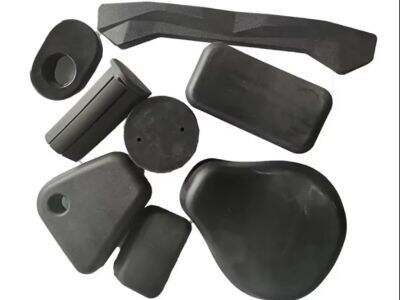Mühürler Nedir?
Mühürler, sıvıları ve gazları borular veya kabın içinde tutmak için önemli bir araç sağlayan kritik bileşenlerdir. Hiçbir şey sızmadığından emin olurlar, bu da birçok farklı iş için önemlidir. Bir su borusundaki rubber bağlantıdaki mühür bir örnektir. Kullanılan iki en yaygın mühür türü de EPDM automotive rubber door seals . Bu iki tür mühür hakkında daha ayrıntılı bilgi verecek ve birbirlerinden nasıl farklılaştıklarını bu metinde ele alacağız.
EPDM vs Silicon Mühürler
EPDM, sentetik lastiğin özel bir grubudur. Yani, doğal malzemelerden ziyade sentetik malzemelerden oluşur. EPDM mühürleri, su, buhar ve kötü hava koşulları (örneğin yağmur/kar) karşıtı yüksek direnç gösterirler. Ayrıca ozon gibi bir gaz ve güneşin紫外線ışınılarını da ele alır. Bu özellikler, EPDM mühürlerinin birçok endüstride çeşitli görevlerde gerçekten faydalı kılan unsurlardır.
Hangi Mühür Daha İyi?
Bazı gerçek testlerle mühürler arasında bazı karşılaştırmalar yaptık ve hangisinin daha iyi olduğunu anlamaya çalıştık. Bu testlerden şu sonuçları elde ettik:
EPDM Yuvası: Elastik EPDM yuvaları, su ve buhar gibi unsurlara karşı iyi yalıtıcılardır. Kolayca ezilmezler, bu nedenle şekillerini oldukça iyi koruyabilirler. EPDM yuvaları aynı zamanda ısıyı iyi tutar ve UV ışınlarına ve ozona direnç gösterirler, bu nedenle dış ortamda kullanılmaya uygunlardır. Ancak diğer taraftan, benzin veya yağa temas ettiğinde çok iyi performans göstermez ve bunlara karşı neredeyse dayanamaz. Bu da onların bu maddelerle ilgili işler için uygun olmayabilecekleri anlamına gelir.
EPDM vs. Silicone Yuvaları: Karşılaştırmalı Bir Çalışma
EPDM ve silicone yuvalarının göreceli konumunu anlamak için birkaç test yaptık ve sonuçlarını karşılaştırdık:
Sıkıştırma testi: Burada her iki tür yuvayı da sıkıştırdık ve her birinin sıkıştırıldıktan sonra ne kadar geri döneceğini gördük. Her iki yuvanın da iyi geri döndüğünü fark ettik, ancak bu senaryoda EPDM kapı gumus çiviti silicone yuvalarından daha iyi geri dönme başarısı gösterdi.
Bu mühürleri yüksek sıcaklık altında kullanacağımıza göre, yüksek sıcaklık altında nasıl performans göstereceklerini test etmek istedik. Bu teste göre silikon mühürler EPDM mühürlerinden daha iyi performans gösterdi. Silikon mühürler 200°C'ye kadar sabit kaldı ve değişmedilerken, EPDM mühürler yaklaşık 120°C'da bozuldu ve dayanımını kaybetti.
Ozon ve UV Direnci Testleri
Bu mühürlerle ozon direncini test ettiğimizde her iki malzememin de iyi performans gösterdiğini fark ettik. Ancak silikon mühürlerine kıyasla EPDM mühürlerinin ozona daha duyarlı olması, onları ozon maruziyeti endişe konusu olmayan alanlarda ideal bir seçim haline getirdi. En son olarak da bu malzemelerin gün ışığındaki紫外線'i ne kadar uzak tutabildiklerini test ettik.
Sonuç
Şimdi, yaptığımız tüm testlere göre, EPDM automotive door seal rubber ve silikon mühürlerin belirgin avantajları ve dezavantajları vardır. EPDM hava mühürleri, su ve buhar direnci sağlama konusunda oldukça yeterlidir, bu da onları belirli işler için en iyi seçeneğe dönüştürür. Silikon mühürleri yüksek sıcaklıkta daha iyi performans gösterir ve yağmur ve yağlar karşı direnç gösterdiğinden farklı durumlarda kullanılır. Bu iki malzeme arasında seçim yapmadan önce mühürü ne için kullanacağınızı ve o mühürün yaşayacağı çevreyi göz önünde bulundurun. RONGHE, EPDM ve silikon mühürleri sunmaktadır, müşterilerin ihtiyaçlarını karşılamak için müşterilere en iyi mühürü sağlamaya adanmıştır.


